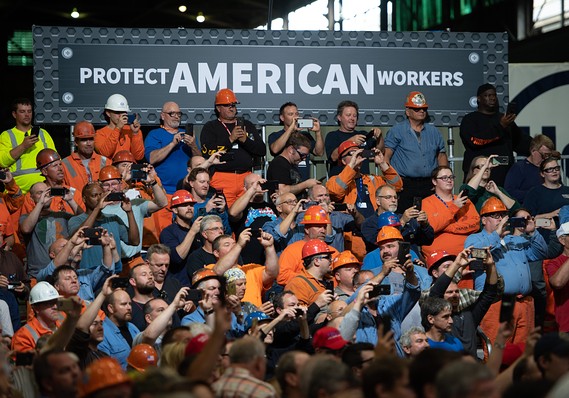 SAUL LOEB/AFP/Getty Images
SAUL LOEB/AFP/Getty Images
Has the U.S. economy finally rediscovered its magic fountain of growth?
Productivity — the most important eye-glazing word in the dictionary — rose in the first quarter at the fastest 12-month pace in 12 years. That is, if a brief recession-induced spike in 2009-2010 is excluded.
Read: Productivity soars 3.6% in first quarter, drives fastest yearly gain since 2010
What that basically means is American workers are producing more goods and services in the same amount of time: Bagels, lawn care, software, new cars, you name it.
That would be great news — if it were sustainable. Many Americans complain it’s tough to make a good living even though unemployment is near a 50-year low and the U.S. is almost a decade removed from its last recession. And low productivity is one of the chief reasons why.
When workers aren’t all that productive, wages and living standards tend to stagnate. By contrast rising productivity enables companies to earn fatter profits and pay workers more without setting inflation on fire.
In short, it’s the key to a higher standard of living.
That’s why the recent surge in productivity is potentially good news. After years of lagging performance, productivity sped up to a 12-month growth rate of 2.4% in the first quarter after years of hovering around a little over 1%.
Part of the increase stems from a surge in business investment after Donald Trump was elected in 2016. When companies spend more on new technology and equipment or increase employee training, it helps workers to do their jobs better.
Stephen Stanley, chief economist of Amherst Pierpont Securities, has been one of the most ardent advocates of the idea that productivity is increasing, a turnabout he attributes in part to the Trump tax cuts that have given businesses more incentive to invest.
While he, like most economists, believes the recent gains are exaggerated, Stanley said “it should be increasingly obvious that the trend of productivity growth is accelerating.”
Other economists are less sure. Some argue the tax cuts and a big burst of fresh federal spending have generated a temporary boost in productivity that is unlikely to last.
“While this is very encouraging, the acceleration reflects a temporary lift from the fiscal stimulus,” economists at Oxford Economists wrote to clients. “As the fiscal boost dissipates, GDP and productivity growth will cool.”
Even the latest gaudy productivity report contains a cautionary sign.
The productivity of manufacturers such as automakers, food producers and fuel providers rose just 1.2% in the past year — half as fast as the business sector as a whole. Productivity is easier to measure in old-fashioned factories than in service-oriented sectors such as health care, finance and media that dominant the modern economy.
Read: Manufacturers grow at slowest pace in April since Trump elected, ISM finds
If productivity does cool off, the key is by how much. A 2.4% yearly rate of growth would be incredibly strong. After all, productivity has averaged just slightly over 2% since the end of World War Two.
Yet even a small increase in the long-run rate of productivity — say to 1.5% or 1.7% — would be a big boon for the economy. It would mean the U.S. could grow a bit faster than what the prevailing wisdom suggests.
And that would mean a bigger piece of the economic pie to feed the hunger of Americans for a better life.








